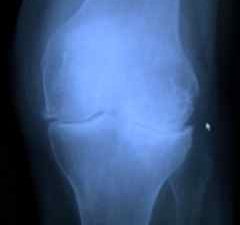From the University of Michigan HealthLab

Researchers are excited about the prospect of incorporating polygenic risk scores to predict obesity, but a new study finds genetics adds little to what’s already discovered in clinic.
The promise of genetic testing is charming doctors and patients who are eager to finally make a dent in rising obesity rates.
After all, weighing too much is a risk factor for lots of chronic diseases and greatly affects quality of life, but knowing this hasn’t made it easier to reverse the growing tide of obesity around the world.
Although the latest methods of genetic risk profiling can help patients know if they’re more susceptible to becoming obese, new research out of the Michigan Medicine Frankel Cardiovascular Center and The Cardiovascular Research Center at The Massachusetts General Hospital suggests we’d be better off focusing on body mass index, a measure of weight and height.
“We found fitness is a better predictor than genetics of where your BMI will go over time,” says lead author Venkatesh Murthy, M.D., Ph.D., a cardiologist at the Frankel CVC. “Genetics clearly has some influence, but other factors are stronger.”
Murthy’s new paper in JAMA Cardiology reported a person’s BMI measurement from 25 years ago was a better predictor of their current BMI than a polygenic risk score.
“There’s been a lot of attention to the idea of using genetic information to understand your risk of obesity or being overweight, and for potential drug development to address those genetic risks,” says Murthy, an associate professor of internal medicine and radiology. “We wanted to understand how, if at all, genetic data would add to the information already routinely available in clinic. It turns out, our standard clinical exam, including an assessment of BMI, actually has vastly more information to help guide patient care.”
BMI over time was most telling
Alongside senior author Ravi Shah, M.D., from the Massachusetts General Hospital, Murthy’s new research evaluated health data from a National Institutes of Health-sponsored study of more than 2,500 young adults from across the United States, who 25 years ago volunteered to participate in a longitudinal study. The data in CARDIA (Coronary Artery Risk Development in Young Adults) was collected between 1985 and 2010 to explore the development of cardiovascular disease.
Murthy, Shah and colleagues used a modern “polygenic risk score” (a composite measure of genetic risk of obesity) to calculate genetic risk of obesity for each person in their subset of the CARDIA study and compare it to the measurements taken during the 25 years of the study.
Baseline BMI in young adulthood explained 52.3% of a person’s BMI 25 years later when it was considered in combination with age, sex and history of a parent ever being very overweight.
The prediction could explain up to around 80% of BMI variation after following someone’s BMI over time, rather than just at baseline and 25 years later.
Those same combinations of age, sex and parental weight history, when considered with a polygenic risk score instead of BMI, were also associated with BMI but in a weaker association that only explained 13.6% of BMI in midlife.
The PRS was also more effective at predicting future BMI in the 1,608 white individuals than the 909 black individuals. Murthy noted there’s more genetic data available in European populations for constructing genetic risk profiles, leading to some concern about methodology for determining polygenic risk scores for non-white patients.
Cautions against widespread use of genetic risk scores
Murthy said these data serve as a reminder that human genetics might be interesting in large population studies, but that caution is still needed toward incorporating them when providing clinical care and advice to patients.
However, he acknowledges clinicians are seeing more and more patients who have already purchased a genetic report from a direct-to-consumer company and want to go over it with their doctor. It’s important for clinicians to be aware of the strengths and limitations of those direct-to-consumer products, Murthy urges.
He said the rising interest in genetic risk scores also brings up the idea of how incorporating them into clinical practice could change behavior.
If someone is told they were born more likely to become obese, for example, how will that change their behavior today or this year, or 25 years down the road?
Conversely, will people who learn they’re less disposed to obesity become more motivated to lose that stubborn weight that’s been difficult to shed?
“We don’t know those answers very well yet,” Murthy says. “However, some data says, whether based on a real genetic score or not, people may perform better in fitness tests if they’re told they’re genetically more likely to be fit. And we run a risk of demotivating some people if we tell them the genetics are against them, even though we now know other associations with BMI are stronger than genetics.”
The good news is calculating your BMI, which Murthy says is a useful marker for the majority of people who aren’t elite athletes, is significantly more affordable than purchasing a genetic test.
Physicians should already have weight and height records for their patients over time, Murthy says, and the conversations around modifiable risk factors relating to BMI should already be happening during patient visits.
“Ultimately, while genetic risk may be most important in those individuals with rare inherited causes of obesity, for the majority of the population at risk for becoming obese, universal recommendations like healthy eating and remaining active are important and should be reviewed regularly with your personal physician,” Shah says.
Paper cited: “Polygenic Risk, Fitness, and Obesity in the Coronary Artery Risk Development in Young Adults (CARDIA) Study,” JAMA Cardiology. DOI: 10.1001/jamacardio.2019.5220

